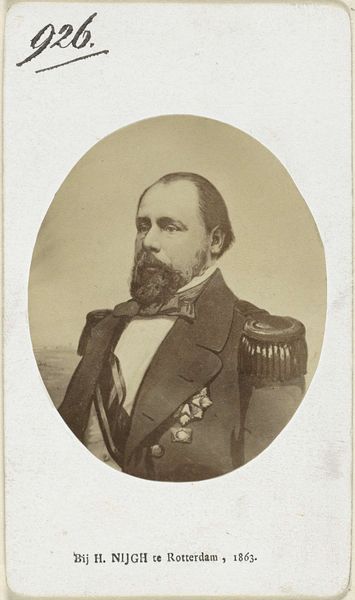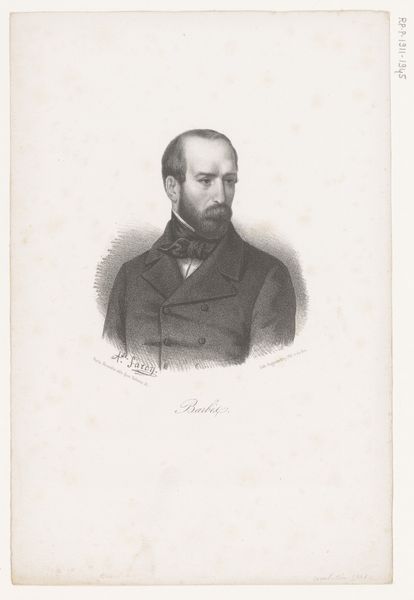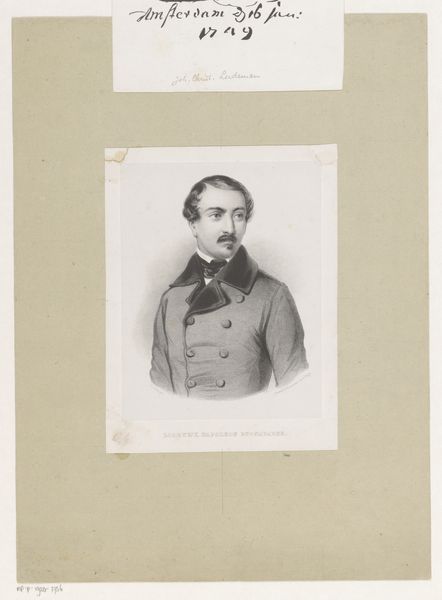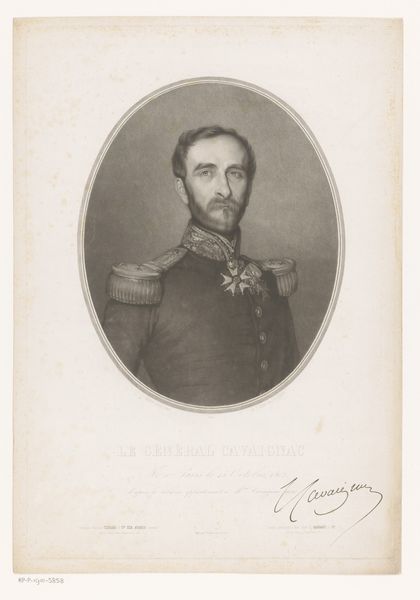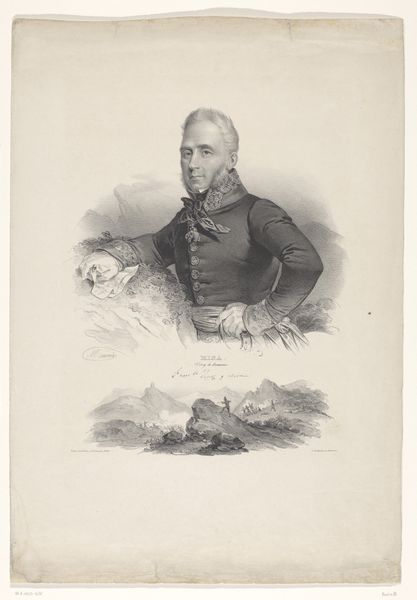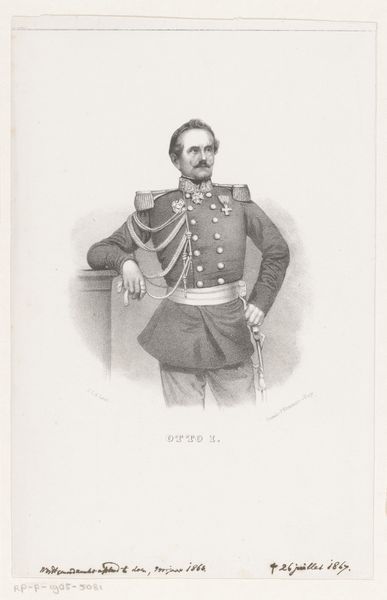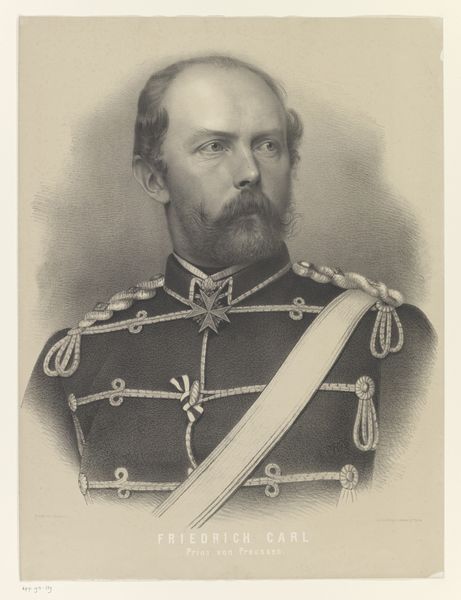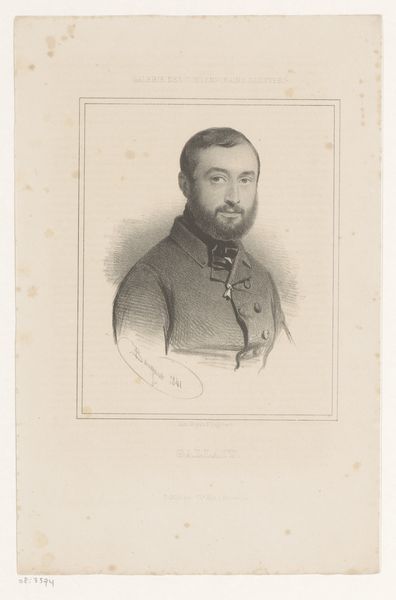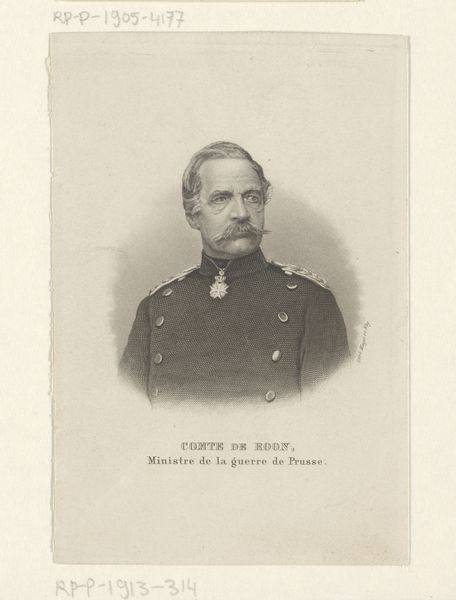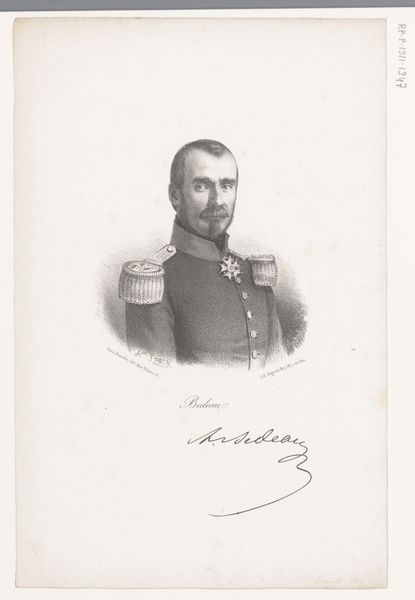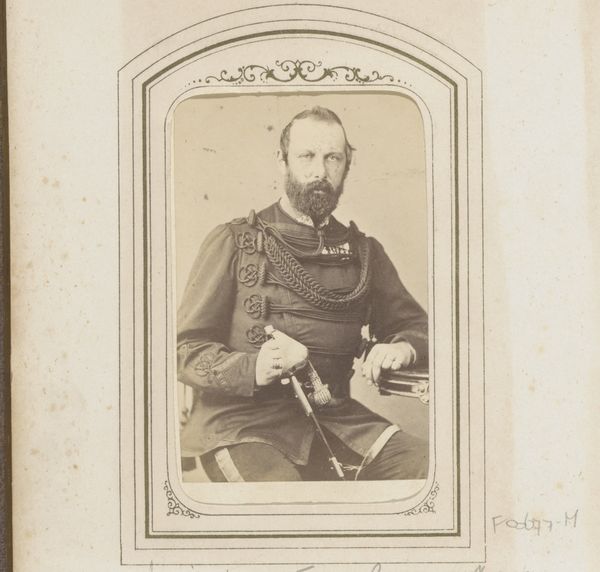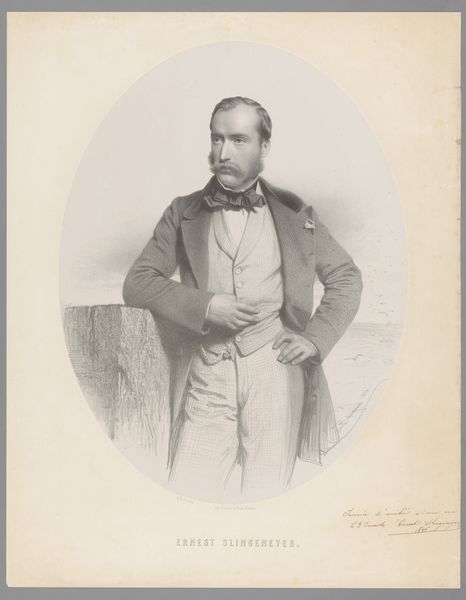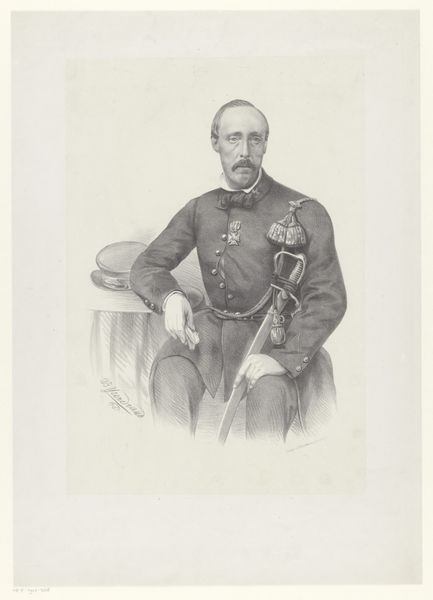
print, engraving
#
portrait
# print
#
caricature
#
portrait drawing
#
genre-painting
#
engraving
#
realism
Dimensions: 152 mm (height) x 113 mm (width) (bladmaal)
Editor: So, this is an engraving titled "F. J. H. Weyhe" from 1862 to 1866. The artist is unknown. I'm really struck by the detail in his uniform and, of course, that magnificent beard! It definitely gives off a feeling of Victorian-era formality. What historical narratives do you see woven into this piece? Curator: This print gives us insight into the representation of military figures in mid-19th century Denmark. Engravings like this often served a dual purpose: to commemorate individuals and to project a certain image of the military. Think about who would have commissioned or bought this. Was it for family, colleagues, or even public consumption? The print’s existence and the decision to depict Captain Weyhe speaks to his status and the perceived importance of his role. Editor: So, it's not just about Weyhe as a person, but what he represents to society? Curator: Exactly. Consider the level of detail afforded to his uniform, signifying rank and authority. Also, think about how the "realism" style might have been perceived. It aimed to present a truthful depiction but also inherently shaped public perception of the military and its officers. How do you think images like this impacted the understanding of military service among ordinary people? Editor: It makes me think about recruitment, maybe. This romanticized, heroic image... Curator: Precisely! These prints become part of a larger visual culture that influenced social values and national identity. Even something seemingly simple like a portrait engraving participated in constructing narratives around duty, honor, and nationhood. Editor: I never thought about a portrait functioning that way. Now I see how it's tied to larger political and social forces at play during that time! Curator: It shows how even individual portraits can tell a much larger story about a culture's values and how institutions like the military used imagery to shape public perception.
Comments
No comments
Be the first to comment and join the conversation on the ultimate creative platform.
